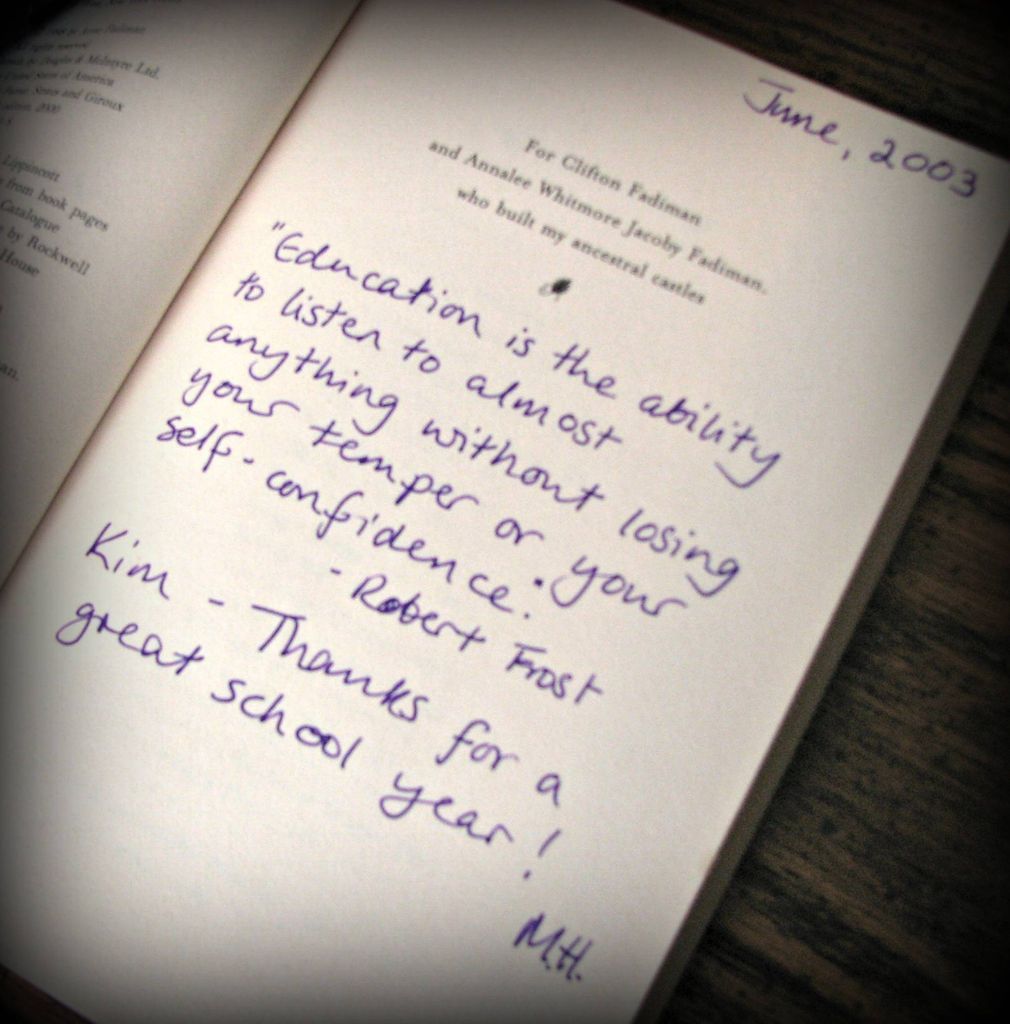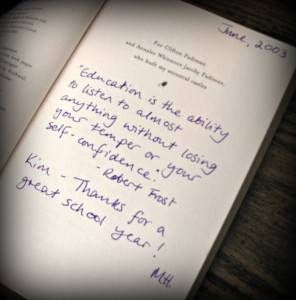
Inscriptions: Boon or Blot?

The day I found both books together was a day for celebration. I bought both, triumphantly, and then proceeded to not read them. Last week, after writing about memoirs about books, I pulled my copy of Ex Libris off the shelf to finally, finally read. When I opened it I noticed, for the first time, the inscription written on the dedication page in purple ink:
June, 2003
“Education is the ability to listen to almost anything without losing your temper or your confidence.” — Robert Frost
Kim — Thanks for a great school year! M.H.
What are the chances of finding a book with an inscription to a person with my own name? I’d guess not high, but I’m a reader, not a statistician. Coincidentally (or, perhaps not), Fadiman has an essay in Ex Libris about inscriptions in books — “Words on a Flyleaf.” For Fadiman (and myself), inscriptions can be a blessing or a curse:
“Unlike the card that accompanies, say, a sweater, from which it is soon likely to part, a book and its inscription are permanently wedded. This can be either a boon or a blot.”
On the plus side, coming across an inscription — either in a book I received as a gift or one I plucked randomly off the shelf at a used bookstore — always makes me smile. Particularly if they are, like the inscription I found in Ex Libris, heartfelt and slightly verbose. I always wonder who the writer and receiver were. It seems clear that Kim was a teacher or administrator, but who is M.H.? A fellow teacher? A student? A friend who spent the year listening to Kim complain or exclaim about her students? It’s hard to know, but you have to admire M.H. for quoting Robert Frost.
Yet despite how much I love finding inscriptions, I never write them in the books I give. I’m a notorious book pusher at holidays, but writing an inscription seems presumptuous. It’s not my place to write on the pages of someone else’s book before they get the chance to read it. Plus, what if it’s a book they’ve already read? A book they don’t want to read? A book they want to pass on to someone else? How will they return or exchange or pass on that book if I’ve already scribbled on the first page?
More importantly, an inscription gives a book weight entirely outside how the reader will feel after reading it. A book suddenly has meaning above and beyond, “I think you’d really like this story.” It has significance tied to a date or time or relationship that makes the book hard to part with — whether you want to keep it or not. I don’t want to put that sort of pressure into the gift of a book. After all, how would M.H. feel if he/she knew Kim gave away the copy of Ex Libris that he/she bought and signed? If that Kim were me, I’d hate to find out.














